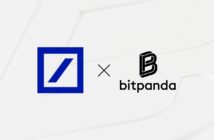The global monetary system is at a critical juncture, as new technologies like decentralized finance (DeFi) and distributed ledger technologies (DLTs) reshape the landscape. Financial institutions are being pushed to confront both the opportunities and risks posed by these innovations. While the promises of DeFi and blockchain technologies seem vast, the underlying risks—especially in permissionless systems—have ignited debates on how to approach this new era.
The Rise of Decentralized Technologies
DeFi and DLTs represent groundbreaking shifts in how financial services operate. Unlike traditional finance, DeFi platforms are built on blockchain networks that enable peer-to-peer transactions without intermediaries. DLTs, as a broader category, allow for data and transactions to be distributed across many nodes, ensuring transparency, immutability, and security.
However, the rise of these technologies also poses a direct challenge to traditional financial institutions. While they offer unprecedented access to financial services and the possibility of reducing operational costs, they also introduce risks that cannot be ignored.
The Governance Dilemma of Permissionless Blockchains
Permissionless blockchains, like those used in most DeFi platforms, present a governance problem. Their decentralized nature means that no central authority controls the network, making it more susceptible to governance issues. Hard forks, a common feature in these systems, can lead to network splits, creating asset volatility and legal uncertainties.
While decentralization is praised for its inclusivity and resilience, it can also mean a lack of accountability. When the governance of a network is left to a decentralized collective, there’s always the potential for conflicting interests and decisions that might undermine the stability of the network.
Security and Technology Risks: A Threat to Integrity
Security vulnerabilities on permissionless blockchains are a growing concern. One of the most notorious threats is the 51% attack, where a malicious entity gains majority control of a blockchain, thereby compromising transaction integrity. The ability to alter the blockchain’s history or double-spend tokens erodes trust in the system and can lead to significant financial losses.
With the rising popularity of DeFi, these attacks could have catastrophic consequences, not just for users but for the larger financial system that might rely on these platforms.
Legal and Compliance Challenges
Perhaps one of the greatest challenges for financial institutions is meeting regulatory requirements, such as anti-money laundering (AML) and combating the financing of terrorism (CFT) standards, in a pseudonymous environment. Permissionless blockchains obscure user identities, making it difficult to trace transactions and enforce compliance.
This is where the divergence between permissionless and permissioned blockchains becomes clear. Institutions that wish to adopt blockchain technology may find that permissioned systems—where participants are vetted and authorized—offer a more viable path for adhering to strict regulatory frameworks.
Settlement and Liquidity Risks
Another critical issue with permissionless blockchains is settlement risk. Unlike traditional systems where transaction finality is guaranteed, blockchains offer only probabilistic finality. This can be a major stumbling block for legal and financial frameworks that require absolute certainty in transaction closure.
In times of visible stress, the very transparency of blockchain can trigger liquidity crises. This “paradox of transparency” creates a heightened risk of asset runs when market participants can see financial strains in real time, leading to swift market reactions that exacerbate liquidity problems.
Political and Regulatory Uncertainty
Cryptocurrency markets are no stranger to regulatory uncertainty. Governments around the world are still grappling with how to regulate blockchain technologies. Sudden policy changes, such as crypto mining bans, can destabilize blockchain networks and lead to price volatility. The lack of consistent regulations adds an additional layer of unpredictability for institutions.
The Case for Permissioned and Private Blockchains
To mitigate these risks, G6 Networks and other industry experts are advocating for the adoption of permissioned and private blockchains. Unlike their permissionless counterparts, permissioned blockchains offer enhanced governance structures where participants are pre-approved. This allows for greater control over security, transaction finality, and compliance with regulatory requirements.
Moreover, private blockchains ensure guaranteed settlement finality, which is crucial for financial institutions that cannot operate on probabilistic outcomes. They also reduce the risk of liquidity crises by controlling transparency to prevent sudden market panics.
A Strategic Choice for the Future
As the financial sector continues to evolve, the choice between permissionless and permissioned systems will depend on institutions’ risk tolerance and regulatory demands. Permissioned blockchains may offer a more secure, compliant, and stable environment for institutions looking to leverage the benefits of DLTs while minimizing risks. On the other hand, permissionless systems may remain attractive for their innovation and decentralization, but they will require careful management of their inherent risks.
Ultimately, financial institutions must navigate this rapidly changing landscape with an eye toward both innovation and stability. By making informed decisions on the adoption of blockchain technologies, they can position themselves to thrive in the future of finance.



